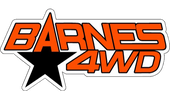A four link suspension kit will optimize the performance and overall ride quality of your rig by balancing triangulation, increasing the force of power, and giving you maximum control.
Check out our link kits
Installation Tips for Adding a Four Link Suspension
Prep: Before you install your off-road suspension parts, access a link calculator. With this tool, you can determine how certain numbers will affect your vehicle and make some comparisons. Note: A four link without a panhard bar is not recommended for front applications where a steering box is used. The straight up-and-down motion that a 4 link provides conflicts with the side-to-side swing of a drag link. This causes severe bump steer and can be quite dangerous.
Lower Links: The lower links are usually the easiest of four link suspension parts to setup. The flatter you can get them at ride height (when viewed horizontally) the better. Length should be two-times the wheel travel you expect; longer and flatter links generally perform better. A 36”- 42” link is commonly used for rigs with a wheelbase that is long enough to accommodate the size. Longer links are easier to bend, no matter which material is used. Triangulating the lower links helps take some of the horizontal load off of the upper links and lowers the roll axis, which reduces flex steer.
Upper Links: The upper links of a 4-link setup can be difficult. The old rule of thumb on length is to make them 75% the length of the lower link – this keeps your suspension geometry more consistent through travel, but it also causes the pinion angle to aim downwards as the suspension droops. Instead, making the upper links the same length as the lower ones – or slightly longer – will allow the pinion to roll up with droop. This helps to keep the driveshaft alive, and can be very useful in short wheelbase rigs with short driveshafts or in low-pinion front applications.
Separation: Link separation affects many of the handling characteristics of a vehicle. For vertical separation at the axle end, the general rule is to try for at least 25% of your tire size. So for a 40” tire, it is a good idea to try and have at least 10” of separation. This isn’t always possible because links usually require compromise.
At the frame end, vertical separation controls your anti-squat, or anti-dive in the front. Anti-squat is usually a matter of driver’s preference. If the frame-side separation is the same as the axle, the vehicle has 0% anti-squat – or no resistance to the body squatting during acceleration in the rear – or braking in the front, which most drivers do not like. Anti-squat can be added by making the separation less at the frame than at the axle.
Horizontal separation at the axle is usually set by pushing the lower links out as far as you can, while preserving enough clearance for your tires and steering. Wider lowers at the axle helps with stability.
On the frame side, the lowers need to allow for tire clearance at full lock. Some drivers like more triangulation, but it is a matter of preference. The horizontal separation for upper links should be opposite of lower links: wide at the frame and narrow at the axle end.
For the axle end, it is ideal to get as little distance between the upper links as possible. This creates more triangulation and helps the axle remain centered as it travels vertically.
At the frame end, mount the upper links as far apart as you can. This makes the vehicle more stable during side-to-side motions.
Potential Fabrication Challenges
You may not be able to complete an “ideal” setup for a four link suspension. Oftentimes, compromises must be made in order to avoid clearance issues. In this case, adjustable mounts help you make changes easily and allow you to feel each adjustment from the driver’s seat. This is most helpful once you see how your rig will react to terrain changes and driver input.
You may not be able to set your links perfectly in line with what a link calculator says. Due to frame shape, body clearance, and component interference. These are some of the many things that can get in the way when it comes to setting up a four link. Many times, you must do what you can with what you have.
Fabrication Experience Required
To install a four link suspension, you will need prior welding and advanced fabrication experience.
Tools Needed
The tools needed for installation include: eye and face protection, a power saw, grinder, welder, jack stands with floor jack, tape measure, angle finder, and level.
Special 4 Link Suspension Product Details
Barnes’ heavy-duty four link kits contain all of the mounts, heim joints, tube inserts, jam nuts, and brackets (predrilled to match bolt size) you need to complete a DIY suspension.
Applicable Vehicle Makes and Models
Barnes 4wd should have the custom off-road parts you need to fabricate a four link system on most 4x4 vehicles.
Additional Off-road Parts
If you’d rather put together your own 4-link suspension system, you can customize your selection of Shock Brackets, Tabs, and Towers, DOM Tubing, and all of the other necessary heavy-duty suspension parts. If you have any questions regarding installation, give us a call at (828) 551-7616 or email sales@barnes4wd.com.

